When we think of wax fabric, the myriad of stunningly striking patterns and palettes spring to mind. But look a little closer and you’ll find a complex backstory, with layers upon layers of history woven into each and every piece. While often referred to as ‘African wax fabric’, this style of textiles actually first originated in Indonesia – or the Dutch East Indies, as it was known during European Colonial times – in the form of traditional batik fabrics. The highly decorative, ancient craft of batik printing is a form of wax resist dyeing of fabric. Patterns vary depending on the regions they originate from, as well as the occasion they are being worn for and the meanings for the wearer, and many of the colours come from natural ingredients.
Vlisco Wax Hollandais. Model: Brenda Asinobi from Nigeria. Fashion Designer: Hudayya © Vlisco
According to Anne Grosfilley in her book, African Wax Print Textiles (Prestel Publishing), during the Dutch colonisation of Indonesia in the early 19th Century they began replicating the local batik fabrics using machinery: "The Dutch developed an ambitious industrial and commercial strategy to maximise profit on the Asian market... [they] began to compete with the artisanal batik production.”
While sales of the fabric didn’t really catch on there, due to the ‘veins’ being seen as imperfections in the printing process, West African soldiers serving under the Royal Netherlands East Indies Army are said to have brought the fabrics home as gifts for their families and they were a huge success.
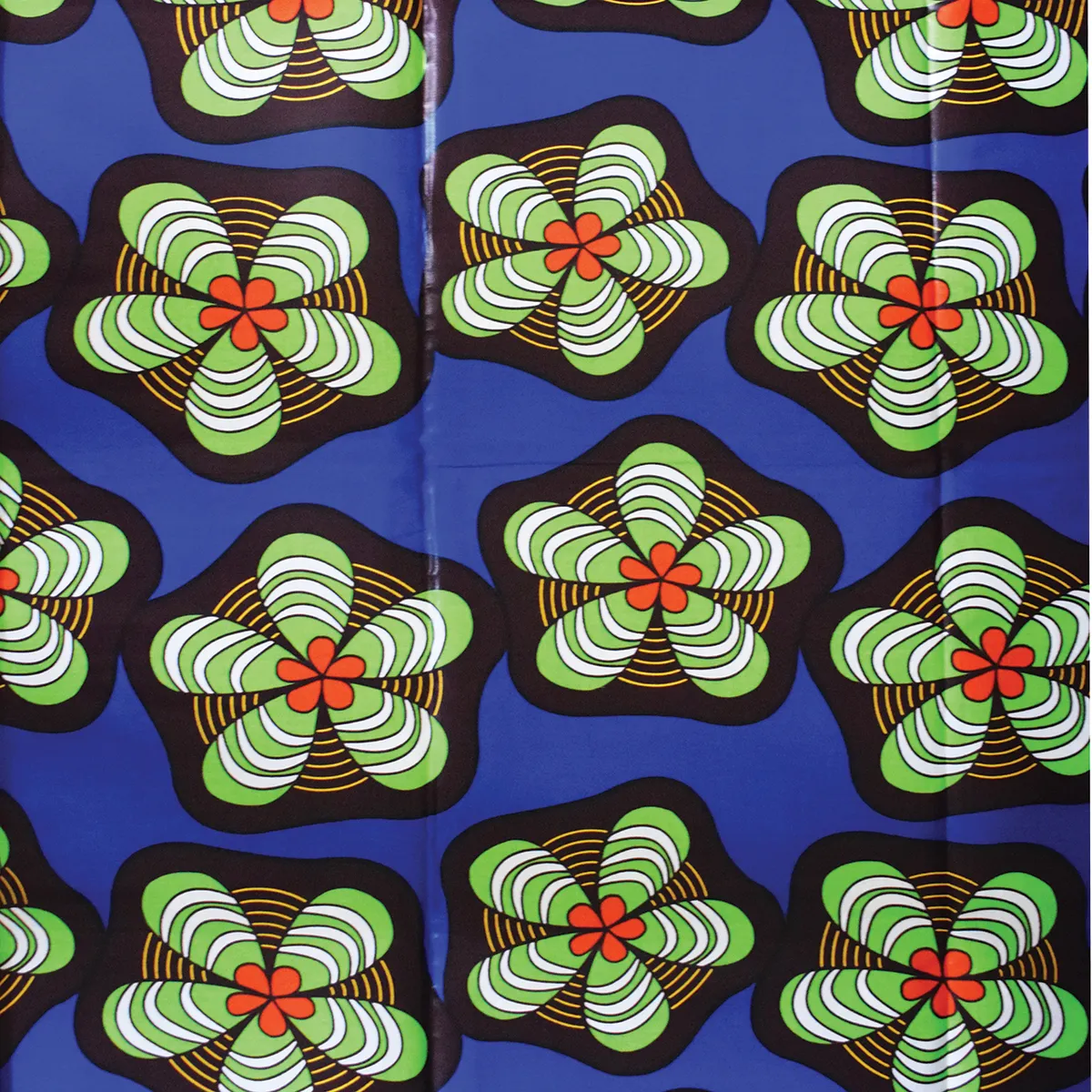
European manufacturers noticed the popularity of these prints in Western Africa, in part due to the missionaries that were working there at the time. One such trader, a Scottish man called Ebenezer Brown Fleming, saw an opportunity and started importing these decorative fabrics from Holland for this new market.
Designs and motifs have meanings and are named after personalities, sayings or occasions
Other fabric manufacturers soon followed suit, one of which is still going strong today, having started out in 1846. Vlisco has created over 350,000 original fabric designs during its more than 170 years of trading, and its fabrics are made with time-honoured methods and materials. According to its website, Vlisco “has been designing and manufacturing distinctive fabrics loved by African women since 1846. Many have become cultural treasures, bestowed with special names and meanings by the merchants of Central and West Africa. Though created in the Netherlands, our designs come to life in Africa where traders and customers name them.”
Shop for African Wax Print Fabric in the UK
Adaku Parker's online wax fabric shop Dovetailed is offering 20% off their seriously beautiful collection of African wax print fabric sold by the yard until 18th October 2020. This automatic discount will applied as you check out.
Head to dovetailed.co.uk to check it out.
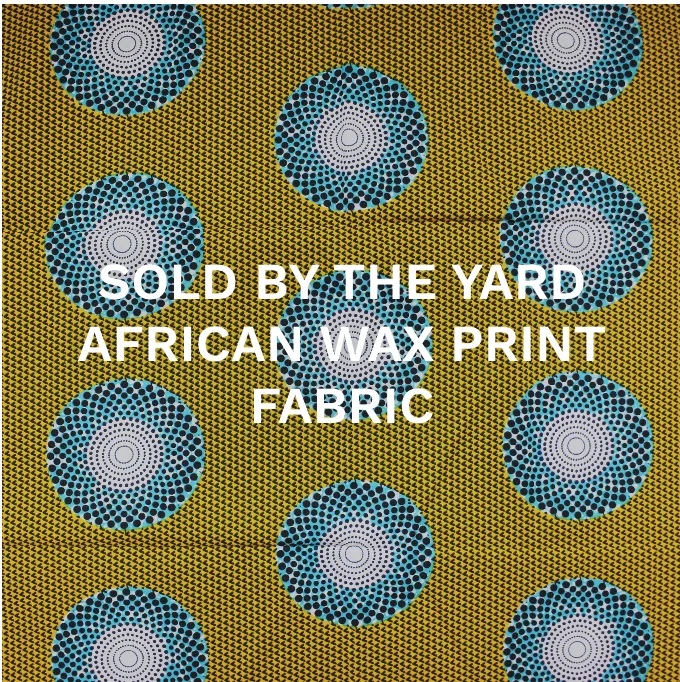
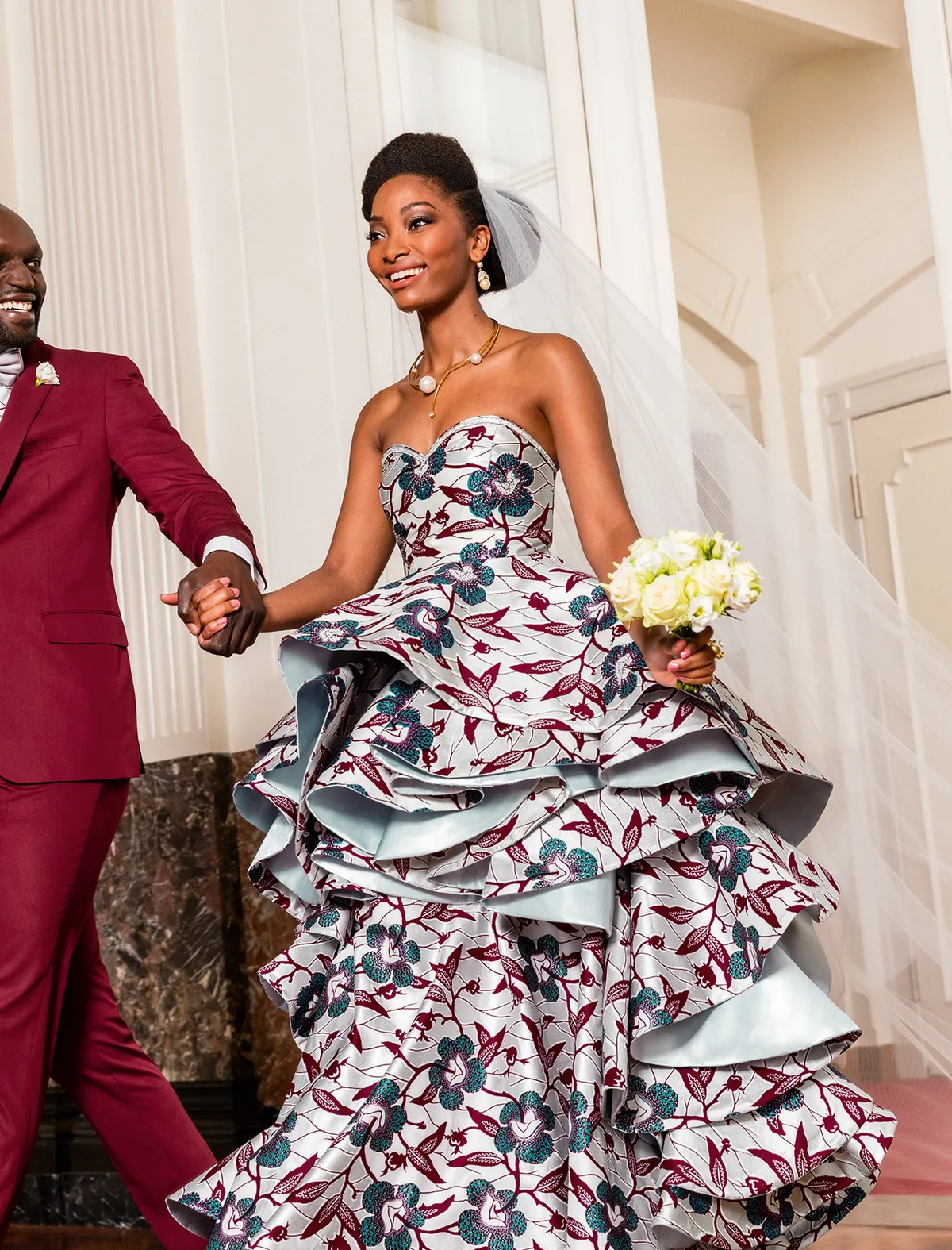
Stories and meanings
Wax fabrics continued to be incredibly popular, being bought and sold across the continent, alongside the traditional textiles produced in each region. As European Colonialism finally came to a close in the 1960s, the new-found freedom for the continent meant it became a symbol of African independence and identity.
The traders that Vlisco talks of were mostly female – most of whom from humble beginnings – that went on to be self-made women. These ladies were a massive driving force in the industry. Through their hard work, they helped to establish the strong and successful market for wax fabrics we see today while building loyal connections with their customers.
Many designs still worn today date back to my grandmothers’ time, making them classics.
And that’s the beauty of these textiles: their popularity is not only thanks to the aesthetic appeal – the patterns formed symbols, and messages and stories were woven into the fibres by the women who sold or wore them, too.
“Many of the different designs and motifs (usually the older ones) have meanings and are often named after sayings, personalities or occasions,” confirms Adaku Parker, a barrister and owner of online wax print fabric shop, Dovetailed. “Essentially, the fabric, through the designs and motifs, tells a story. Many of the designs still worn today date back to my grandmothers’ time, thereby making them classic designs. One such design, and one of my own personal favourites, is ‘Nsu Bra’. It is a common design that most people will know. Ghanaians call this fabric Nsu Bura (or spelt Nsu Bra), which is from the (Akan) Twi language in Ghana and means ‘well’. The tiny dots, which are in a spiral form, resemble the ripples made in a well after a stone is dropped into it.”
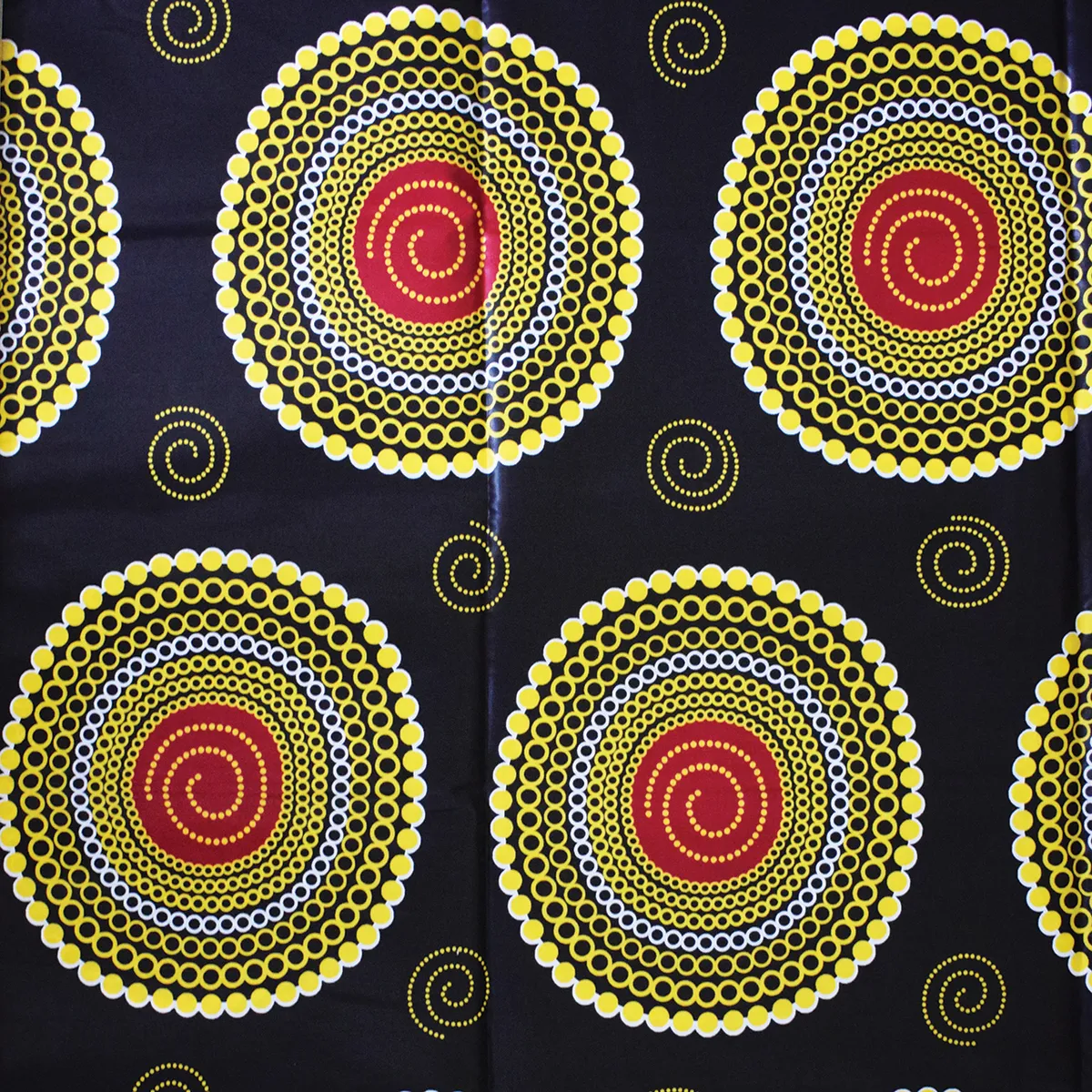
Working with wax prints
If you’ve never sewn with wax prints before, the fabric can be used to make everything from clothing to bags and upholstery, as Adaku explains: “I absolutely love the bold, bright colours. The structured nature of the fabric makes it a dream to sew with.”
Care instructions are simple, as she tells us: “The fabric has a stiff/glossy ‘finish’. Pre-wash the fabric on a cool wash and the ‘finish’ washes away, leaving the bright, bold colours intact.” And there's no need to be concerned about the longevity of the vibrancy: “The colours do not fade even after years of washing and wearing. Do not worry too much about the straight of grain or the cross grain when using the fabric for clothes-making. Rather, decide on the preferred direction of your design and follow whichever grain that is on.”
I absolutely love the bold, bright colours, and its structure makes it a dream to sew with.
Adaku says that she “came into selling fabric very much by accident,” she reveals. Working as a barrister since 2001, it was while on maternity leave in 2016 that she took evening classes in dressmaking, tailoring, African fashion and pattern cutting, and eventually started selling fabric in 2017.
“One of the wonderful things I have learned is that my career change may not have been an accident at all,” she tells us. “It turns out that there is a history of sewing, teaching and selling fabric in my family.”
Adaku’s maternal grandmother was a seamstress who owned a sewing school in Nigeria, and her paternal grandmother sold fabric in Northern Nigeria. “I never really knew either of these women but I can only imagine that they were amazing, having no less than about 15 children between them. It gives an entirely different meaning to the expression ‘working mum’,” she laughs. “I definitely have a keen sense of picking up the baton that they put down, albeit separated as we are by both time and by continents. The stories continue to be told through the fabric.”

Meanings and motifs
A few of the stories hidden in some of the classic wax print fabric designs.
‘Record’ or ‘Plaque-Plaque’
“In Nigeria, the circular design reminded people of vinyl records. Here's me wearing this design – this is probably my best ‘make’ to date. I pattern-matched at the centre-front panels, back panels and sleeves.

My mum calls this design ‘record’ and whenever she speaks about it, her eyes light up. I can see that the fabric takes her back to a time when vinyl was very much a thing and this bright fabric would have no doubt been a cutting-edge design at that time,” says Dovetailed founder Adaku Parker (www.dovetailed.co.uk)
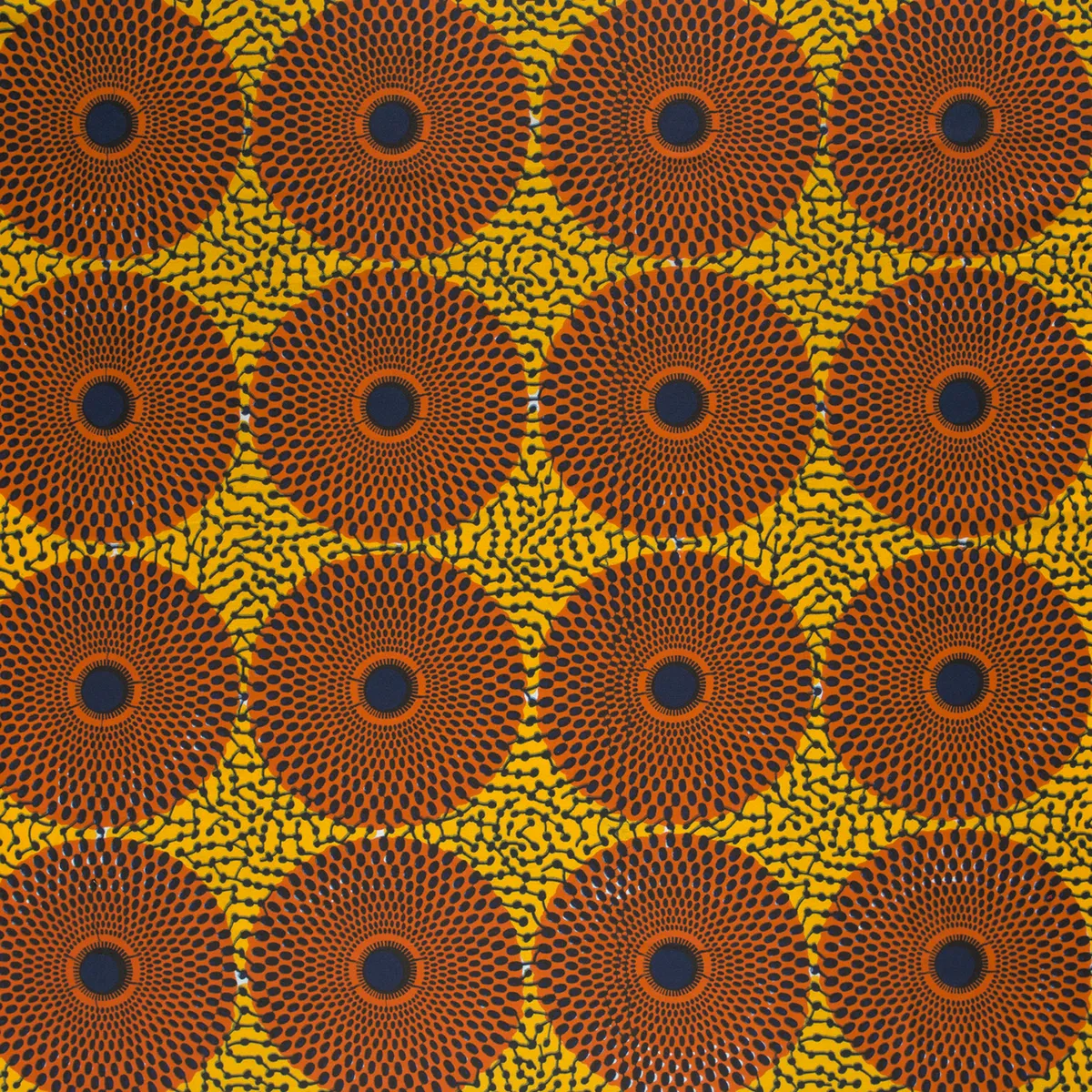
‘The Happy Family’
According to the Vlisco website (www. vlisco.com), this design represents the archetypical African family: “At the centre is the maternal figure, the chicken, surrounded by her chicks and future chicks, the eggs. This clearly indicates the pivotal role of women inside the family."
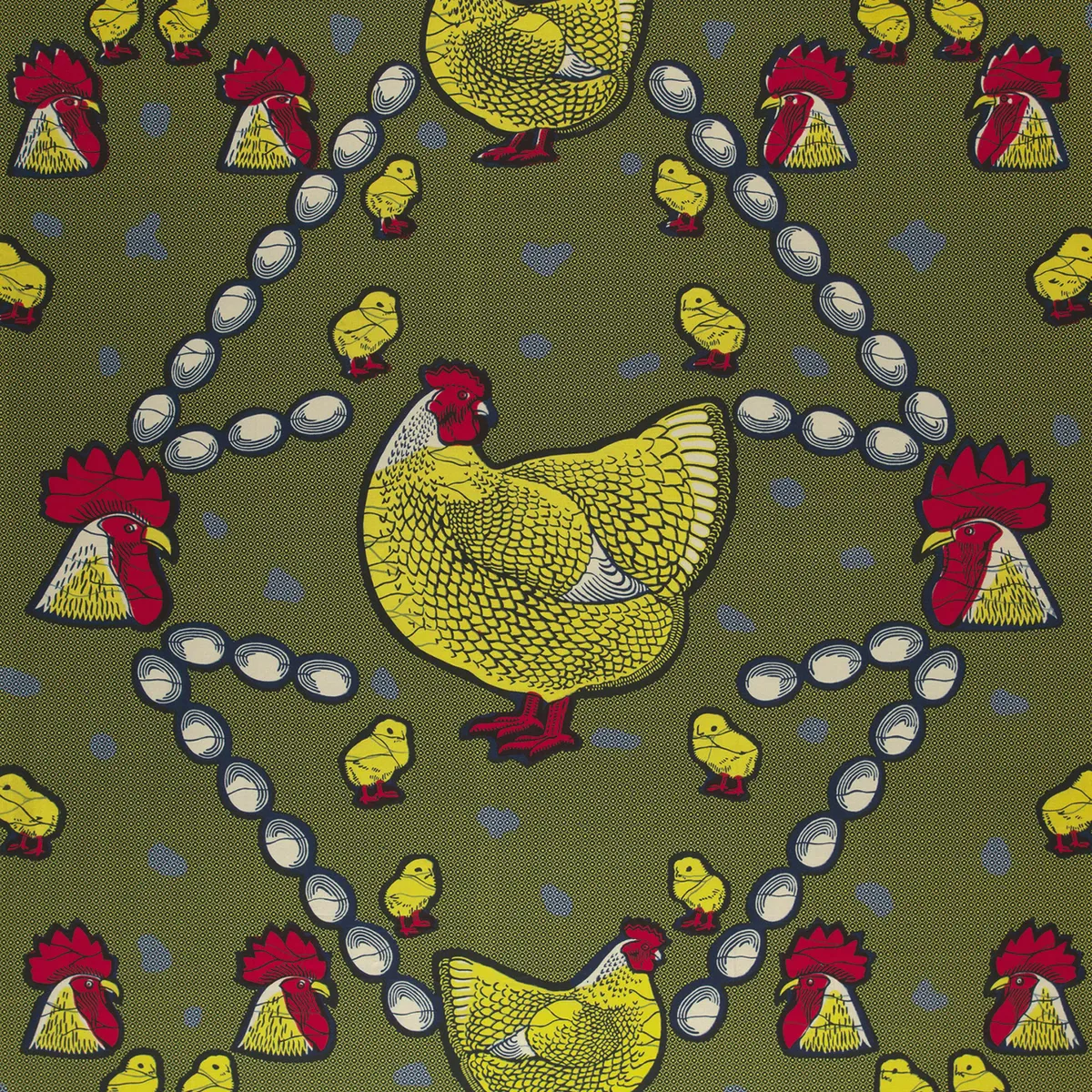
‘Ungrateful Husband’
As Salomey Gyamfi explains to Aiwan Obinyan in her brand new documentary film Wax Print: From the Cradle to the Grave, (www.waxprintfilm.com): “The story we know, as told in the past, is that if your husband is cheating on you and you are afraid to talk to him then you’ll buy this design and wear it. By wearing it you are then indirectly telling your husband that he has been ungrateful to you.”
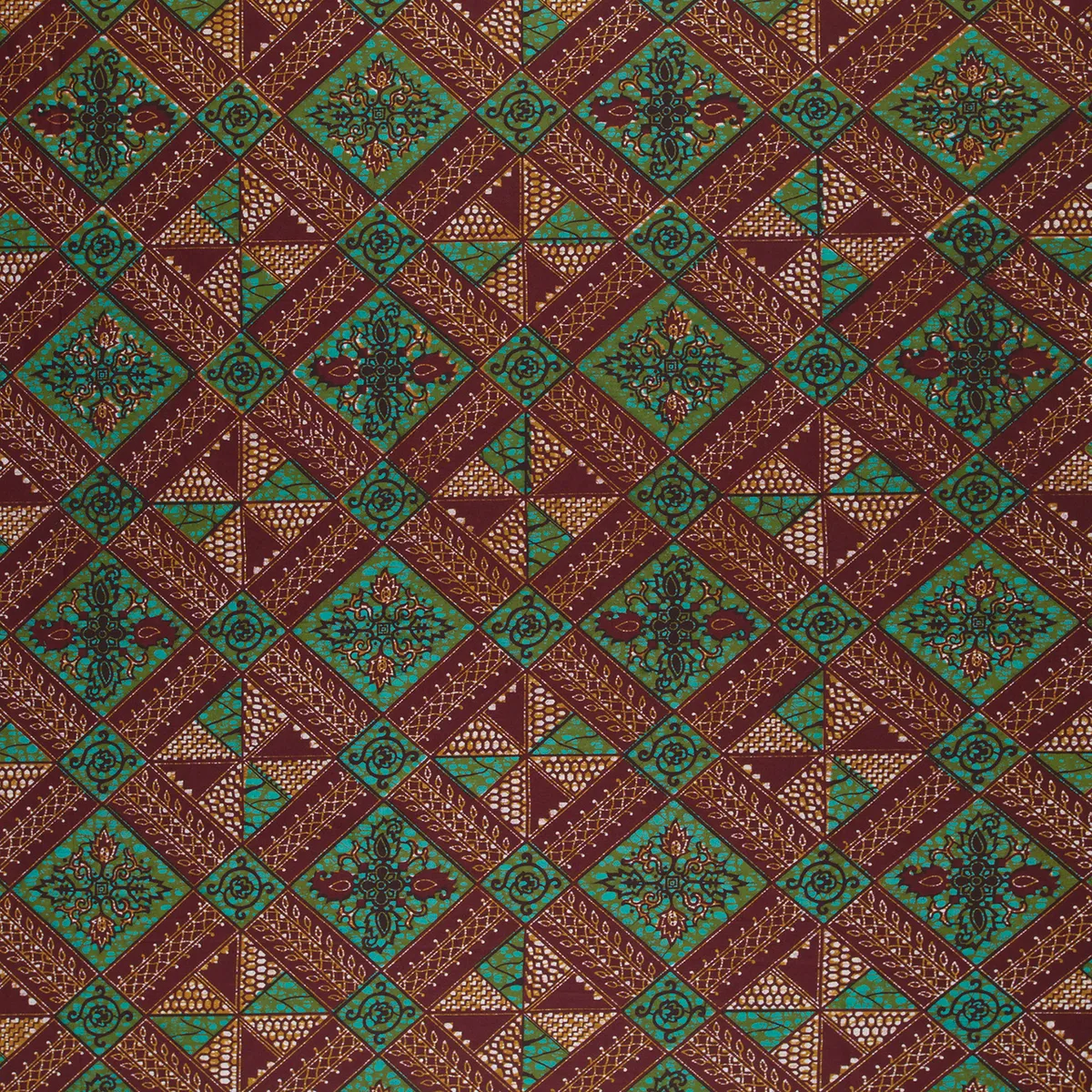
Learn more about African Wax Print Fabric
Watch
Thefeature documentary, Wax Print, by Aiwan Obinyan takes a detailed look at the fabric’s history, telling "the story of how one fabric came to symbolise a whole continent.” A must-watch for any fabric fan. www.waxprintfilm.com
Visit
Head over to Yinka Shonibare’s website – www.yinkashonibare.com. This contemporary artist uses striking wax prints in beautifully innovative and detailed art pieces. Some of these are on permanent display, such as ‘Nelson’s Ship in Bottle’ at the National Maritime Museum in Greenwich, London. This piece of art is “a scaled down replica of HMS Victory… it has 80 cannons and 37 sails set on the day of battle. The fabrics used were inspired by Indonesian batik, mass-produced by Dutch traders and sold in West Africa.”


